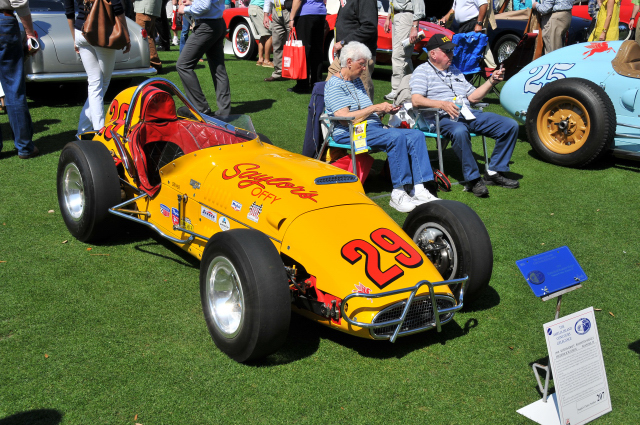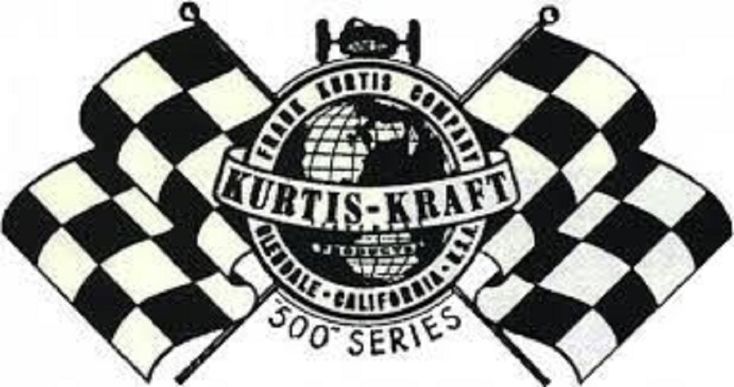1947 Kurtis Kraft Midget Racer

The descriptions of the Classic Cars in the Directory were partly generated or supplemented with the help of artificial intelligence (AI). The content may occasionally not always be entirely accurate or factually correct despite careful checking.
The Kurtis Kraft Midget Racer 1947 is a vintage racing car which embodies the spirit of American engineering and ingenuity. Created by Frank Kurtis, a renowned mechanical engineer and a pioneer in the field of auto racing, this midget racer is considered to be one of the most significant vehicles of its time. It represents the post-war era of racing in America, where the passion for speed and innovation was at its peak.
The Kurtis Kraft Midget Racer 1947 is a compact and lightweight vehicle, designed to provide exceptional handling and speed. The car measures only 6 feet in length and sits on a 78-inch wheelbase. It weighs in at a mere 1,200 pounds, making it exceptionally quick and agile on the racetrack. The body of the car is made of a lightweight aluminum alloy, which provides the necessary stiffness and durability needed for racing.
The chassis of the Kurtis Kraft Midget Racer 1947 is constructed using a unique blend of materials to achieve the necessary strength and weight distribution. The car features a tubular steel frame, which supports the engine and suspension components. The front suspension of the car is a classic split axle design with transverse leaf springs, while the rear suspension features a live axle with semi-elliptic leaf springs. The steering system is a simple and straightforward worm and sector arrangement, which provides precise and responsive handling.
The Kurtis Kraft Midget Racer 1947 is powered by a 1100cc Offenhauser engine, which produces a staggering 80 horsepower. The engine is mated to a four-speed manual transmission, which provides smooth and effortless gear changes. The car boasts an impressive top speed of 120 miles per hour, which is an impressive feat considering its small size and light weight.
The cockpit of the Kurtis Kraft Midget Racer 1947 is a simple and utilitarian affair, designed to provide the driver with a clear view of the road ahead. The seat is placed in the center of the car, and the steering wheel and pedal assembly are adjustable to accommodate drivers of various sizes. The car is also equipped with a full complement of gauges, including a speedometer, tachometer, oil pressure gauge, and water temperature gauge.
Overall, the Kurtis Kraft Midget Racer 1947 is a remarkable racing machine that embodies the American spirit of speed, innovation, and ingenuity. With its lightweight construction, responsive handling, and powerful engine, it is a formidable opponent on the racetrack, and an icon of American racing history.
Milestones
- 1946: Frank Kurtis forms Kurtis Kraft Company in Los Angeles to manufacture race cars. - 1947: Kurtis introduces the Kurtis Kraft Midget Racer, a lightweight, open-wheel race car. - March 1947: The Kurtis Kraft Midget Racer wins its first race at Madera Speedway in California with driver Bob Swanson. - July 1947: The Kurtis Kraft Midget Racer makes its debut at the Indianapolis Motor Speedway, with driver Johnnie Parsons finishing 4th in the 100-mile "Night Before the 500" race. - August 1947: Kurtis Kraft Midget Racer driver Danny Oakes wins the Western Racing Association championship. - 1948: The Kurtis Kraft Midget Racer becomes the dominant car in midget racing, with drivers like Bill Vukovich, Tony Bettenhausen, and Jimmy Davies winning championships. - 1950: Kurtis Kraft introduces the Offyette, an updated version of the Midget Racer with a more powerful engine and improved suspension. - Late 1950s: The popularity of midget racing declines, and Kurtis Kraft shifts its focus to building Indy cars and sports cars. - 1962: Frank Kurtis sells the Kurtis Kraft Company to Dean Van Lines, and the company name is changed to V-K Engineering.Technical
• Model: Kurtis Kraft Midget Racer • Year: 1947 • Chassis: Lightweight, tubular frame • Body: Sleek, aerodynamic design with open cockpit • Engine: Offenhauser 110 cubic inch four-cylinder • Horsepower: Approximately 150 • Transmission: 2-speed, manual • Suspension: Adjustable torsion bar front and rear suspension • Brakes: Hydraulic, 4-wheel disc brakes • Weight: Approximately 900 pounds • Top Speed: Approximately 120 mph • Drivers: Famous drivers such as A.J. Foyt, Parnelli Jones, and Mario Andretti have driven Kurtis Kraft Midget Racers.